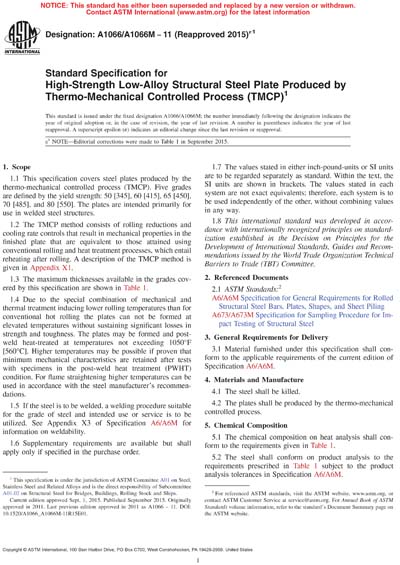Historical
ASTM A1066/A1066M-11(2015)e1
Standard Specification for High-Strength Low-Alloy Structural Steel Plate Produced by Thermo-Mechanical Controlled Process (TMCP)
1.1 This specification covers steel plates produced by the thermo-mechanical controlled process (TMCP). Five grades are defined by the yield strength: 50 [345], 60 [415], 65 [450], 70 [485], and 80 [550]. The plates are intended primarily for use in welded steel structures.
1.2 The TMCP method consists of rolling reductions and cooling rate controls that result in mechanical properties in the finished plate that are equivalent to those attained using conventional rolling and heat treatment processes, which entail reheating after rolling. A description of the TMCP method is given in Appendix X1.
1.3 The maximum thicknesses available in the grades covered by this specification are shown in Table 1.
1.4 Due to the special combination of mechanical and thermal treatment inducing lower rolling temperatures than for conventional hot rolling the plates can not be formed at elevated temperatures without sustaining significant losses in strength and toughness. The plates may be formed and post-weld heat-treated at temperatures not exceeding 1050°F [560°C]. Higher temperatures may be possible if proven that minimum mechanical characteristics are retained after tests with specimens in the post-weld heat treatment (PWHT) condition. For flame straightening higher temperatures can be used in accordance with the steel manufacturer’s recommendations.
ASTM International [astm]

